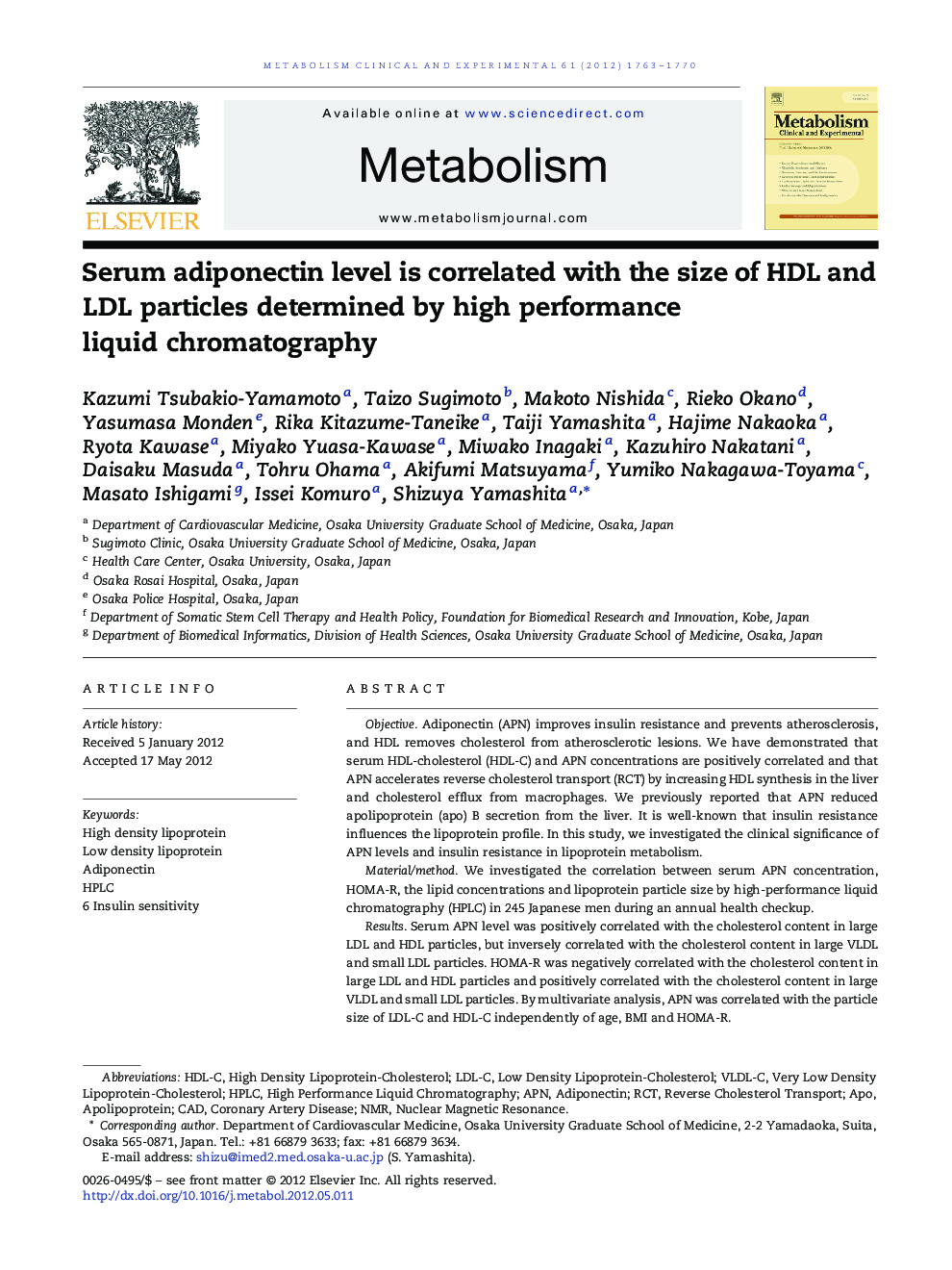| کد مقاله | کد نشریه | سال انتشار | مقاله انگلیسی | نسخه تمام متن |
|---|---|---|---|---|
| 5903607 | 1157100 | 2012 | 8 صفحه PDF | دانلود رایگان |

ObjectiveAdiponectin (APN) improves insulin resistance and prevents atherosclerosis, and HDL removes cholesterol from atherosclerotic lesions. We have demonstrated that serum HDL-cholesterol (HDL-C) and APN concentrations are positively correlated and that APN accelerates reverse cholesterol transport (RCT) by increasing HDL synthesis in the liver and cholesterol efflux from macrophages. We previously reported that APN reduced apolipoprotein (apo) B secretion from the liver. It is well-known that insulin resistance influences the lipoprotein profile. In this study, we investigated the clinical significance of APN levels and insulin resistance in lipoprotein metabolism.Material/methodWe investigated the correlation between serum APN concentration, HOMA-R, the lipid concentrations and lipoprotein particle size by high-performance liquid chromatography (HPLC) in 245 Japanese men during an annual health checkup.ResultsSerum APN level was positively correlated with the cholesterol content in large LDL and HDL particles, but inversely correlated with the cholesterol content in large VLDL and small LDL particles. HOMA-R was negatively correlated with the cholesterol content in large LDL and HDL particles and positively correlated with the cholesterol content in large VLDL and small LDL particles. By multivariate analysis, APN was correlated with the particle size of LDL-C and HDL-C independently of age, BMI and HOMA-R.ConclusionsAPN may be associated with the formation of both HDL and LDL particles, reflecting the enhancement of RCT and the improvement in TG-rich lipoprotein metabolism and insulin resistance.
Journal: Metabolism - Volume 61, Issue 12, December 2012, Pages 1763-1770